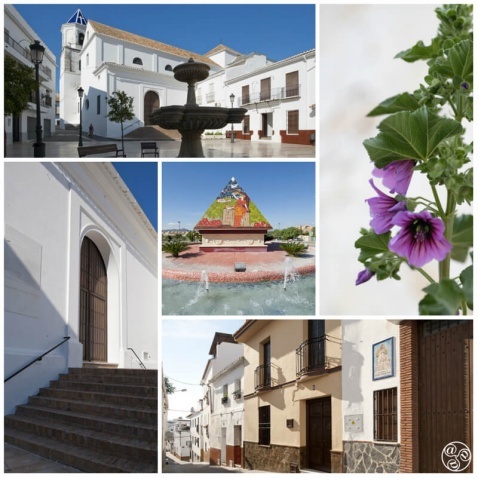
Alhaurin el Grande © Michelle Chaplow |
|
Alhaurin El Grande
Alhaurin El Grande is a satellite town for many families working in the provincial capital Malaga. The outskirts provide new urbanisations and the old town is very much conserved.
History
Alhaurin El Grande has a rich history. In the forested areas south-east of the village of Alhaurín el Grande there are traces of Neolithic occupation: silent witnesses to the long history of human habitation of the area. A history longer than history itself.
By the time that the Romans arrived, the tiny Iberian settlement in the Sierra de Mijas was already well established, but if it had a name the Romans chose not to record it. Instead they gave it one of their own. The village became Lauro Nova. It was a spot apparently blessed by the gods: fertile, temperate, and surrounded by hills riddled with valuable mineral deposits. Roman villas popped up around the kernel of the village like dozens of Jack-in-the-Boxes springing open in rapid sequence. The hills are still dotted with their remains.
It was a golden age which became a little tarnished during the time of the Visigoths. The town was in no danger of disappearing, but its development was exceedingly slow. It was not until the Moors took it on and built it a fortress on a hilltop called Torres de Fahala that it began to move again. The Moors also gave it a new name: Alhaurín (Garden of Allah). Like the Romans before them, they linked the township to a second to which they gave the same name, distinguishing them as Alhaurín el Grande and Alhaurín de la Torre. To the Romans they had been Lauro Nova and Lauro Vetus.
The fort was destroyed in the destructive zeal of the Christian reconquest, but at least the village survived. Others close by, such as Benamaquis and Fahala were not so fortunate.
Alhaurín el Grande has survived a great deal. Waves of invaders, epidemics of plague, even an earthquake in 1680. During the Peninsula War of 1808-14 it was occupied for four years by French troops and suffered considerable bombardment.
Alhaurín el Grande - Hotels
Book hotels in Alhaurín el Grande
It would not be surprising, therefore, if all traces of its long past had been regularly obliterated. But some has miraculously survived. There is the 12th Century Moorish archway, the Arcos de Cobertizo, which, while not being in any way spectacular (it stands close to the church and now leads nowhere) but at least it represents a tangible link with the past. In the small plaza in front of the town hall, the Plaza del Ayuntamiento, are three Roman columns which were discovered close by at Fuente del Sol. Unlike some other villages in the hills, Alhaurín el Grande acknowledges that it has a history, and is quietly proud of it. The plaza, incidentally, has a superb view of the valley.
Golf
For the golfers among us there is a great Golf Hotel & Resort that provides an enjoyable 18 holes that has been updated and made more everyday golfer friendly.
El Molino Morisco de los Corchos
One of the town's best attractions for visitors, and it is well signposted, is the Moorish Cork Mill - El Molino Morisco de los Corchos
